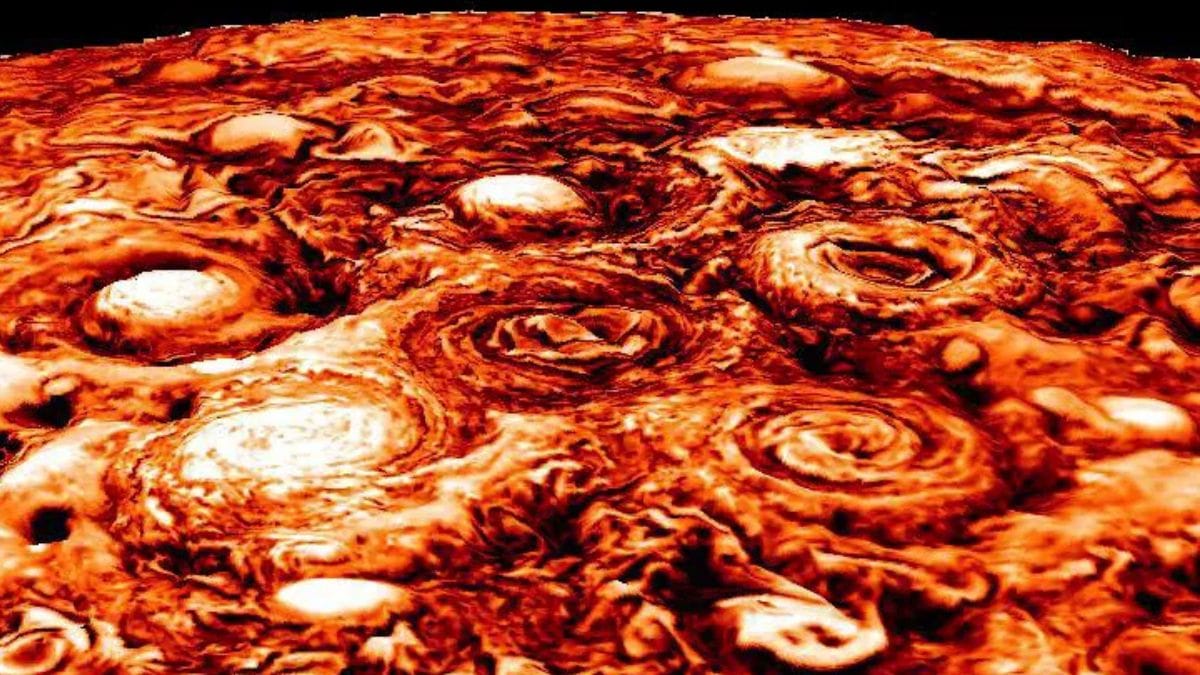Juno Mission Sheds Light on Jupiter’s Storms and Volcanic Activity on Io


NASA’s Juno mission has discovered a world of cyclones at Jupiter’s north Jovian pole, a region of cooler stratospheric haze. The cyclones drift to the pole through a process the researchers refer to as “beta drift” via JunoCam and Jovian Infrared Aurora Mapper. The cyclones oscillate around their centres and can drift clockwise around the pole. Juno has also been making recurring flybys of the innermost Jovian moon, Io, revealing evidence of subterranean magma flows below its surface. These cooling flows could explain how Io’s volcanoes erupt, as about 10% of the moon’s subsurface has these flows.
Juno Spots Colliding Jupiter Cyclones and Magma Beneath Io’s Surface
As per the data presented by NASA at the European Geosciences Union General Assembly on April 29, Juno has observed a large central cyclone over 1,800 miles wide, encircled by eight slightly smaller cyclones. These weather systems, blowing at speeds over 100 miles per hour, interact through a phenomenon called beta drifts — similar to Earth’s cyclones but progressing to Jupiter’s pole.
Once enabled, researchers could visualise both visible and thermal activity in Jupiter’s atmosphere. The cyclones stabilise one another and slowly push in the same direction around the pole—in a clockwise direction, as the researchers noted. Jupiter’s cyclones differ from those on Earth since they do not weaken over time at the poles, when the planet has a different atmospheric makeup.
At the same time, exploring Io with Juno has made another discovery: that beneath the surface of the moon lie hidden flows of magma. By pairing infrared and microwave data, scientists picked up warm lava from a large eruption on Dec. 27, 2024. The volcano remained active through Juno’s next flyby in March and is expected to erupt again in May. These discoveries mark the most energetic volcanic eruption ever observed on Io.
The detection of subsurface magma confirms Io’s surface is constantly being renewed. Scientists calculate that 10% of the moon’s interior contains slowly cooling lava. These lava flows help transport heat from Io’s interior to the surface.




